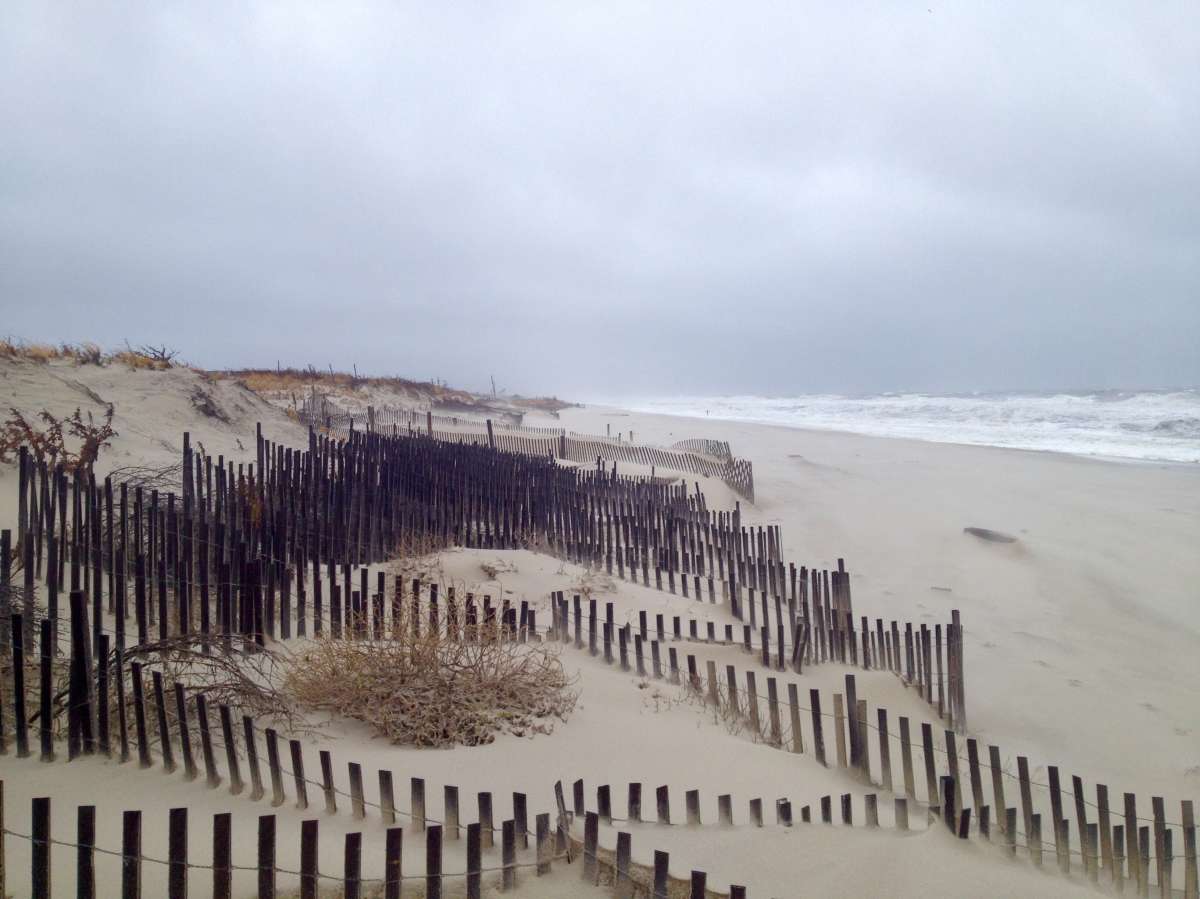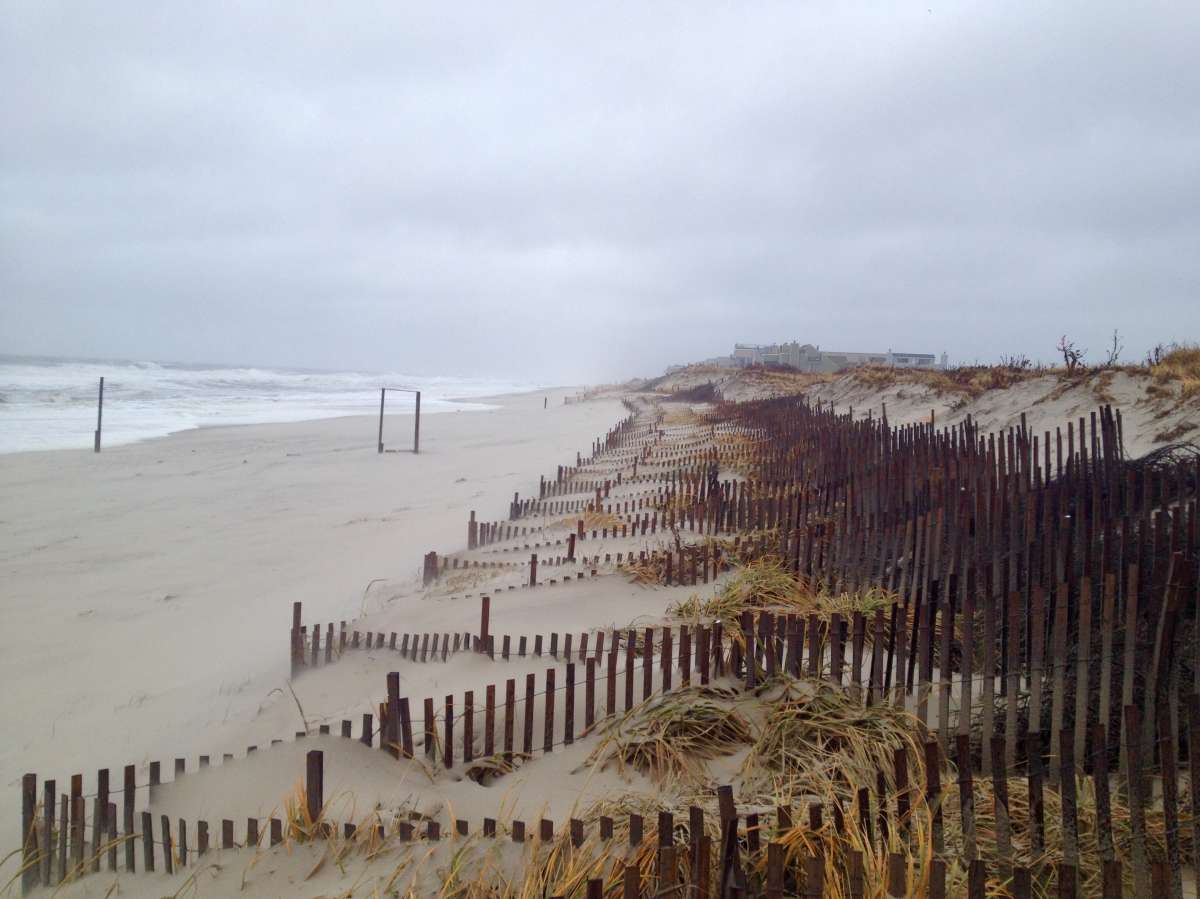Gallery: How a nor’easter builds dunes
Dominick Solazzo lives for the northeasterly gale.
The 42-year-old South Seaside Park resident is a weather enthusiast and an ecologist — two passions that naturally push him out the door during stormy weather.
“Only those who live beside the ocean understand the desire to walk the beach during the worst weather,” Solazzo yelled yesterday while getting sandblasted on the beach and simultaneously tweeting the sentiment.
But to him, there’s much more to coastal storms than just experiencing Mother Nature’s power.
A dune evangelist, Solazzo is an outspoken proponent of naturally building the protective mounds of sand, as opposed to engineers and heavy machinery doing the work.
“A nor’easter normally provokes mental images of flooding, strong winds, property damage, and coastal erosion,” he says. “But given ideal conditions, it can be used as a management tool to mitigate coastal erosion by building sand dunes.”
Inspired by a local resident and an ecology professor at Rutgers University’s Cook College, Solazzo has been spearheading dune management in the Midway Beach section of South Seaside Park for over a decade.
Midway Beach’s dune building program began over three decades ago, growing gradually over time, according to Solazzo, who points out that as a private community, the residents decide how to manage their beach.
“The dune here has grown significantly during the monitoring history with sand accumulating around a series of dune fence installations,” a 2005 New Jersey Beach Profile Network Annual Report prepared by Stockton College’s Coastal Research Center notes. “Initially there was no dune, just a bare sand hill about 6 feet lower than the present crest elevation. The dune width as of November 2004 had reached 130 feet between the landward fence and seaward toe with a maximum crest elevation of 22.3 feet NGVD.”
With Solazzo’s stewardship and an army of dedicated volunteers, the dune system grew even more over the last decade.
But what’s most paramount, he says, is proper management to maintain the system’s viability and protective nature.
“If you add storm fencing and native vegetation to the mix of strong onshore winds a nor’easter provides, you have the birth of a dune,” he stresses, pointing to a line of dune fence arranged in a saw-tooth fashion. “Wind blown sand becomes obstructed by the fencing and deposited as its velocity slows.”
And that’s exactly why Midway Beach was spared from Superstorm Sandy.
The 2013 New Jersey Beach Profile Network Annual Report found that the dune in Midway Beach “was wide and high enough to be an island of low damage in an otherwise devastated region.”
About a third of the community’s dune system was lost to the Atlantic Ocean, but water never made it to the street, the dune guru says.
Solazzo stresses that therein lies the beauty of letting nature work for you, pointing to sand blowing directly into the dunes during yesterday’s nor’easter.
“By repairing our fencing and planting dune grass after Superstorm Sandy, coastal storms since then have blown sand back into our dunes. With just a little assistance, nature can work for us.”
“Mother Nature is not always against us.”
WHYY is your source for fact-based, in-depth journalism and information. As a nonprofit organization, we rely on financial support from readers like you. Please give today.




